"I have just gone over my comet computations again, and it is humiliating to perceive how very little more I know than I did seven years ago when I first did this kind of work." -Maria Mitchell, Astronomer
If you were around back in 1997, perhaps you remembered seeing Comet Hartley 2 back then, as it brightened and came close to Earth, as captured by NASA.
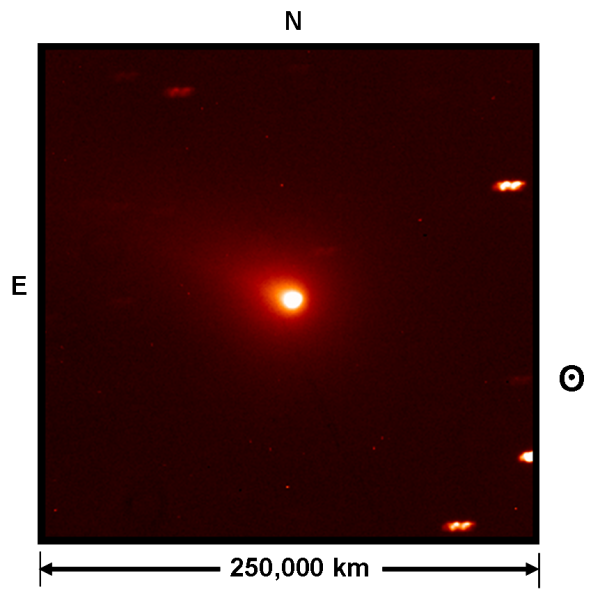
Unlike the other comets you know of, like Halley's Comet, Hartley 2 returns close to Earth every 6.5 years, while most comets take nearly a century!
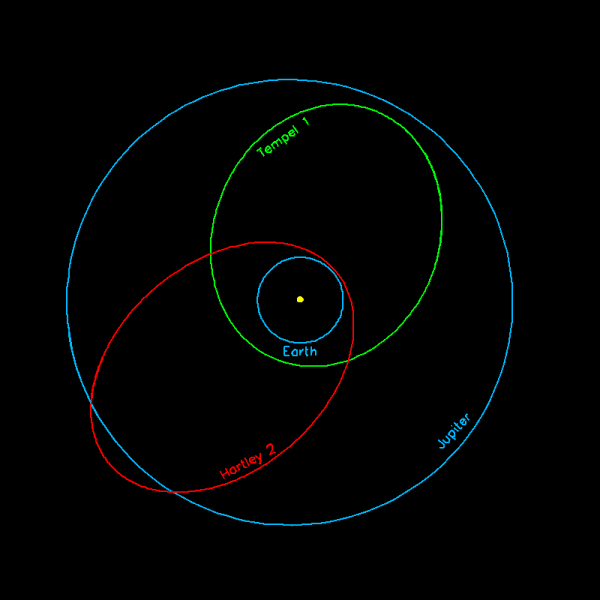
Comet Hartley 2 doesn't look like it originates from the Kuiper Belt. Rather, it looks like it's some sort of asteroid, flung close to the inner solar system by, perhaps, a chance encounter with Jupiter!
In fact, if you look up in the night sky now (or rather, in the early morning sky for my Northern Hemisphere friends), you might see something like this:
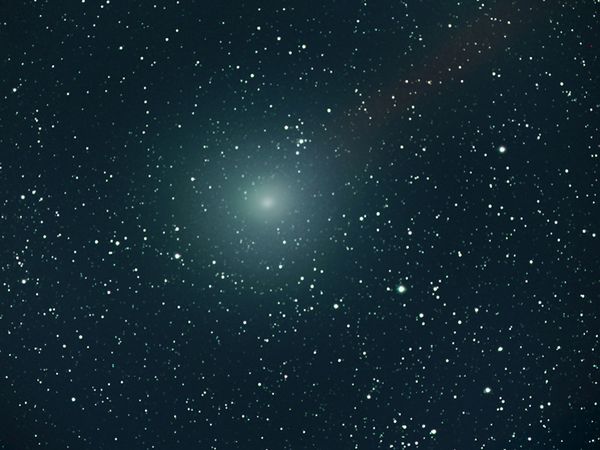
And where would you look to find it? Well, over the last few days of October, it passed through the constellation of Gemini, and you can pretty easily extrapolate where to look next from this picture.

(As we pass into late November, those of you in the Southern Hemisphere will get a better view.)
Well, NASA's EPOXI mission just yesterday passed within 700 km of this comet, and what it found was unprecedented! You see, we've gotten pretty close to other comets before, with some exciting results.
After all, as just a fuzzy streak in space, it's pretty difficult to get a look at what's going on with the nucleus of these comets!
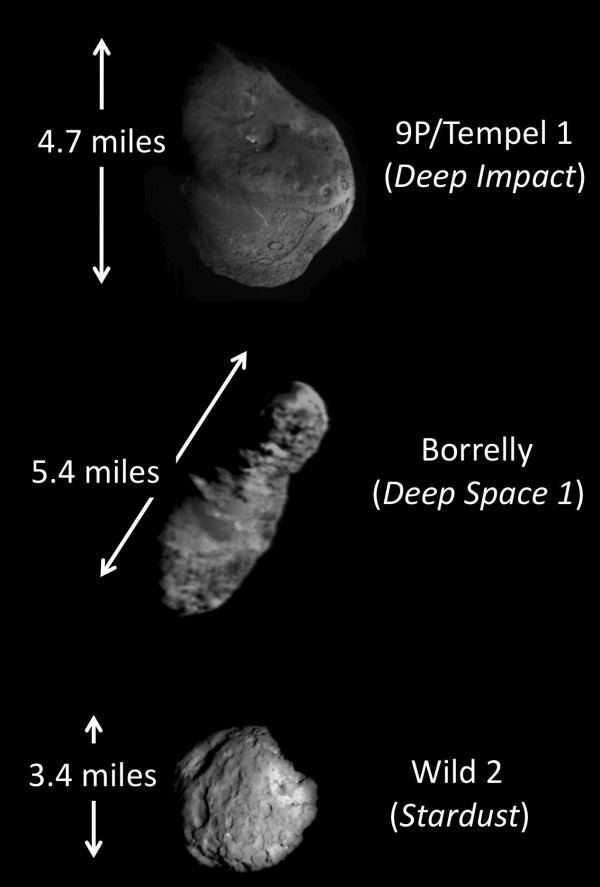
Unfortunately, none of these comets were doing, at the time, what comets are best known for: emitting a giant tail of gas and dust!
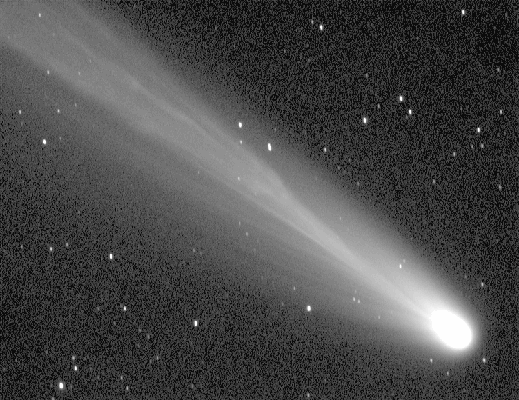
But here they are, the stunning images of Comet Hartley 2!
This potato-shaped comet is tumbling through space, and at only 1.25 miles (2 km) in diameter, it's the smallest comet we've ever imaged up close!
But it's also emitting tiny amounts of debris, making its tail, and it's doing so from two different spots!
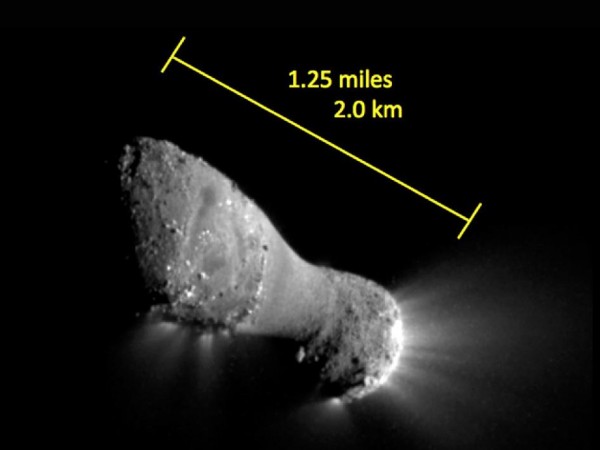
But what's most remarkable about this is what you can't see with your naked eye. Unlike other comets, with their tails made mostly of ice, melting into water, the tail of Comet Hartley is mostly rocky dust and carbon dioxide, known commonly as dry ice!
Why is this comet so different than practically all of the others?
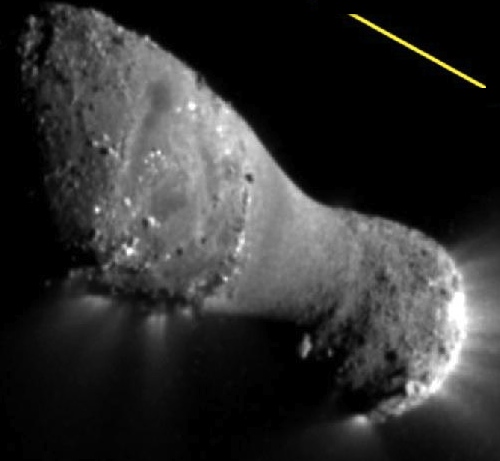
Because it's not a traditional comet; it's an asteroid that simply got too close to the Sun! On Earth, if you're a small rock, and you want to escape from the Earth's gravity, you need to move at about 25,000 miles per hour (about 11,000 meters per second).
But on Comet Hartley 2? It's so small and light, that if you move at a mere 1.4 miles per hour (or just 0.6 meters per second), you'll escape from the surface of the comet, and leap off into interplanetary space! That's slow enough that hitting a dry ice molecule with a beam of sunlight will totally give it enough energy to do just that!
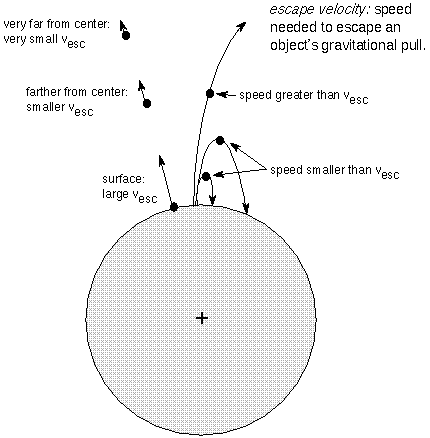
And that's why this comet has a tail, even being as unusual as it is! So enjoy it while we can see it, because it's shrinking and losing mass all the time, but it's bright and brilliant right now! Like all things, Comet Hartley 2, won't be around forever. So enjoy the light from this tiny rock, and thanks to Jupiter for sending it our way!
- Log in to post comments

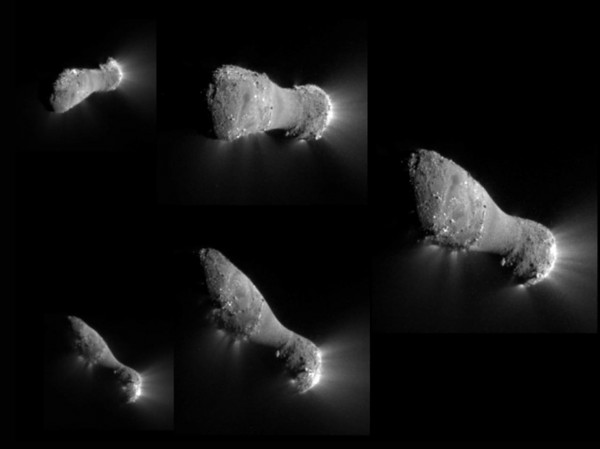




That's not a comet - it's a giant stretched tektite !!!
Earth escape velocity is not 11,000 km/s, but "only" 11 km/s.
What it looks like is two spherical objects that were orbiting each other and the space between them got filled in. Because the space between them would be shaded, stuff that evaporates from the outside would tend to collect there, and cement any dust that happens to move down hill together.
That would explain why the middle part seems more isotropic.
Thanks for the catch, Jean-Denis!
Does comet Hartley 2 exhibit a tail during it's complete orbit?
If not, does it move slowly enough to accrue mass at it's furthest point from the sun?
That's awesome - we can actually see a dynamic plume (with distinct patches of material) rather than a simple incandescent blur.
Any convincing theories for why the "neck" region is smooth while the rest of the surface is lumpy? Its pretty striking.
May I make an editorial or stylistic suggestion? Please don't overuse the exclamation point. It is fascinating stuff and I appreciate you sharing your enthusiasm. But ending every other sentence with '!' just dilutes it's impact and starts to be distracting. Thanks.
As for editorial suggestions, Greg G (and Sphere Coupler), use your apostrophes carefully.
Is this visible with the naked eye? I went out last night/this morning to try to see it but couldn't. There's a lot of light pollution around here so I didn't have much hope but just wanted to make sure that there could have been the possibility of seeing it since I'm going to be back in the boonies in a couple weeks.
But, but, I like to abuse comma's, it's fun!
Seriously though, do we have data from 6.5 and 13 years ago that show that net dissipation/emissions has occured and how much mass is lost each trip? Then we should know when it's last arrival will occur.
If it has at least one more trip to it's mass I think I'll wait cause it's cold outside and the next time it shows up...it will be warmer.(I use the ellipsis[...] for effect)
Mena, no, it isn't visible with the naked eye.
As comets go, it's quite bright, but it's also large (at least the coma in Ethan's third picture is), and so the surface brightness (the amount of light coming from a unit area) is low. Even a moderately light-polluted sky obscures it.
it's not a traditional comet; it's an asteroid
Citation needed.
Is there a real good reason that NASA
is sitting on the High Resolution images
of this "comet" ?
Frankly, I'm getting fed up and sick to my stomach
at them doling out images of Whatever, and ALWAYS
giving us blurry, out of focus or low resolution images.
They said that they have a High Resolution camera
on board EPOXI and it took thousands of images-
So, Where The Hay are our Taxpayer-funded Hi-Rez pix???
"That's slow enough that hitting a dry ice molecule with a beam of sunlight will totally give it enough energy to do just that!"
...and thereby hangs a tail!
Thanks for blogging this. Cool pictures.